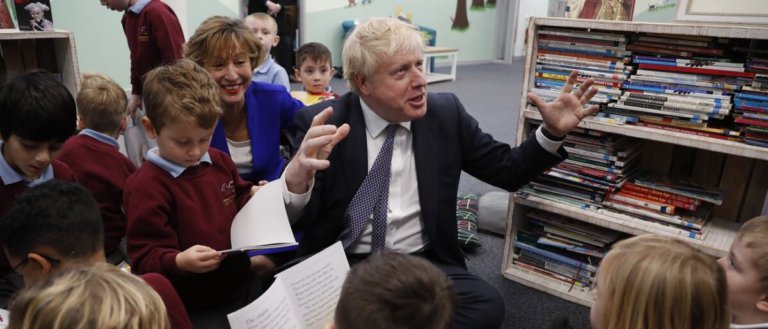
How will schools fare under a new Conservative government that’s in a strong position to implement its manifesto commitments?
Although much of the Conservative manifesto signalled a business as usual approach to education policy, there was the big promise of £14 billion extra funding for schools – though this was a reaffirmation of a pledge made by the Prime Minister, Boris Johnson, in August. (£1 ≈ US$1.31 at the time of publishing)
The funding will be delivered over the next three years: £2.6 billion in 2020-21, increasing to £4.8 billion in 2021-22 and £7.1 billion in 2022-23. According to some commentators, this should bring real-terms funding per pupil back to 2010 levels – when funding was at its highest.
On the steps of Number 10, the morning after the election, Johnson once again promised “more money for schools”. But with increasing costs and rising pupil numbers this may not equate to a real-terms increase – as has been the case before.
More money, fewer teachers?
Alongside the funding boost also comes a promise of higher expenditure, with starting salaries for teachers of £30,000 a year. Again here, the manifesto restates an earlier promise, and what a promise (sic) – for some newly qualified teachers this would be a 20 percent boost on their current salary.
There’s no indication of whether there would be comparable or knock-on uplifts for more experienced teachers, though Gavin Williamson, Secretary of State for Education, suggested that “flatter pay progression” structures in schools will be encouraged.
But school leaders will be agonising over the question of whether the funding injection, estimated at 7.5 percent by The Institute for Fiscal Studies, will be sufficient to cover the additional costs of new teachers. If not, a promise that ought to attract more into the profession may actually lead to fewer teachers in schools.

More money for new teachers, but schools could still financially struggle. Source: Shutterstock
Reforming the systems
It’s not just funding that has been promised by the Conservatives, but further reform to school systems too. More places in special schools, for those with the most complex needs, alongside an expansion of alternative provision, for children who are at risk of, or have suffered, permanent exclusion. These may be needed if the Conservatives’ plan to crackdown on behaviour and back [headteachers] to use exclusions more widely is to be implemented.
There are also commitments to seeing more Free Schools opened, along with “innovative” schools with specialisms – a possible hark back to the specialist schools movement instigated under former prime minister John Major, and enthusiastically maintained by New Labour.
It’s also very likely that a richer curriculum will be developed in schools. This may be in response to the new Ofsted inspection framework, which looks for an ambitious and comprehensive curriculum. But it will also be a result of new funding for a new premium to provide money for art, music and sport, as well as more PE in primary schools. For many pupils and parents this will be welcome, after a decade of narrowing curriculum driven by too much emphasis on performance data, according to the chief inspector of schools.
But this doesn’t mean the Ofsted inspection regime has gone soft. The government has promised to revisit no-notice inspections – where teams simply turn up at schools unannounced. It will also provide extra funding for Ofsted to allow for longer inspections in bigger schools.
This, along with revisiting outstanding schools, may seem fairer, but it won’t take away much of the stress caused by Ofsted – which is identified as an issue in its own research – nor will it give the support that struggling schools need. While the manifesto promises to intervene in schools with “entrenched underperformance” it’s not clear what form that intervention would take.
More choice for parents
The neoliberal commitment to market forces remains at the centre of ongoing reforms, with the promise that parents will be able to choose the school that best suits their children. This concept of “choice” has led to secondary schools becoming larger and fewer in number – with government policy producing not more schools but an increase in different types of schools. For parents, this had made choices at once more limited, but also more complicated – and it looks like this is set to continue.
In the end, the story is of more of the same, but with more power to the Department for Education. The government looks set to continue reforms in the same direction as before. But over time, these may become more rapid and perhaps also more extreme.
By Chris Rolph, Director, Nottingham Institute of Education, Nottingham Trent University
This article is republished from The Conversation under a Creative Commons license. Read the original article.
Liked this? Then you’ll love…
Why schools’ reading lists should include more diverse books
Can schools implement constructivism as an education philosophy?







